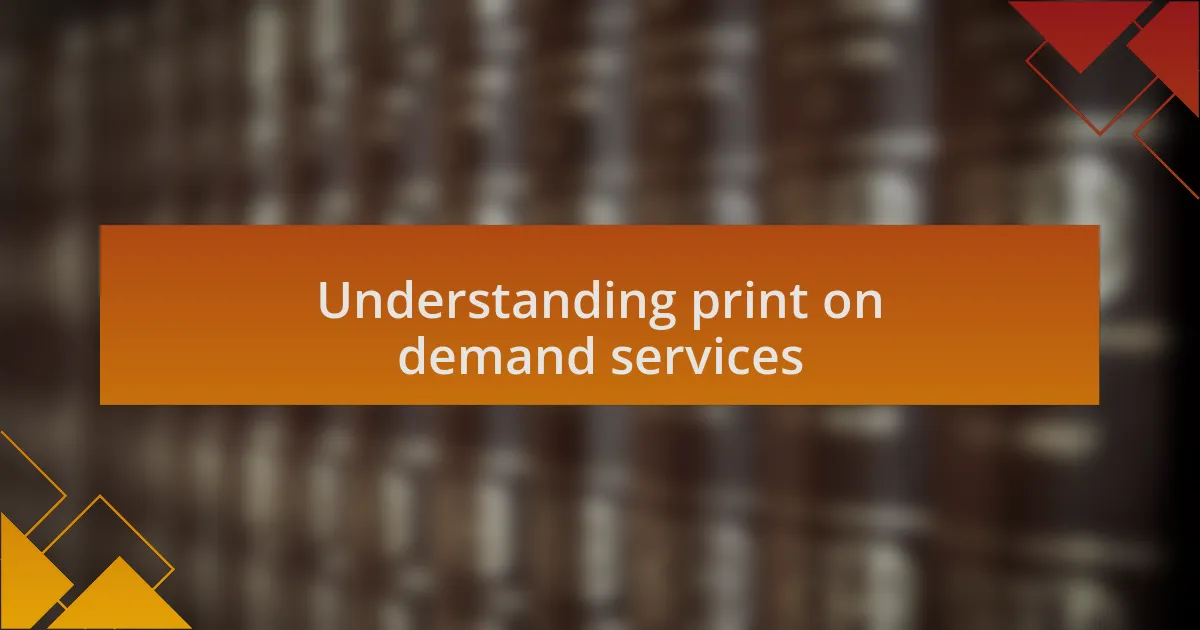Key takeaways:
- Print on demand services revolutionize self-publishing by eliminating upfront costs and inventory risks.
- The process involves creating products that are printed only after an order is placed, allowing for real-time fulfillment.
- Different platforms offer various advantages such as distribution reach and printing quality, necessitating careful selection based on personal goals.
- Embracing the learning curve and being adaptable is essential in navigating print on demand successfully.

Understanding print on demand services
Print on demand services have completely changed the landscape of self-publishing for many creators, including myself. It’s incredible to think that I can publish a book or a custom product without the hefty upfront costs associated with traditional publishing. Imagine being able to offer your work to readers without the risk of unsold inventory—it’s both liberating and empowering.
When I first delved into print on demand, I remember feeling a mix of excitement and confusion. How does it actually work? In simple terms, the process allows you to create and sell products without having them physically printed until an order is made. I found it fascinating to see how my designs came to life, yet I was also anxious about quality and fulfillment time. Would my readers appreciate the final product?
As I navigated various platforms, I realized that each service comes with its own set of advantages and challenges. For example, some platforms offer wider distribution, while others provide better printing quality. This made me reflect—what truly matters in my journey? Ultimately, it’s about finding the right fit for my vision, embracing the learning curve, and being open to adjustments along the way.